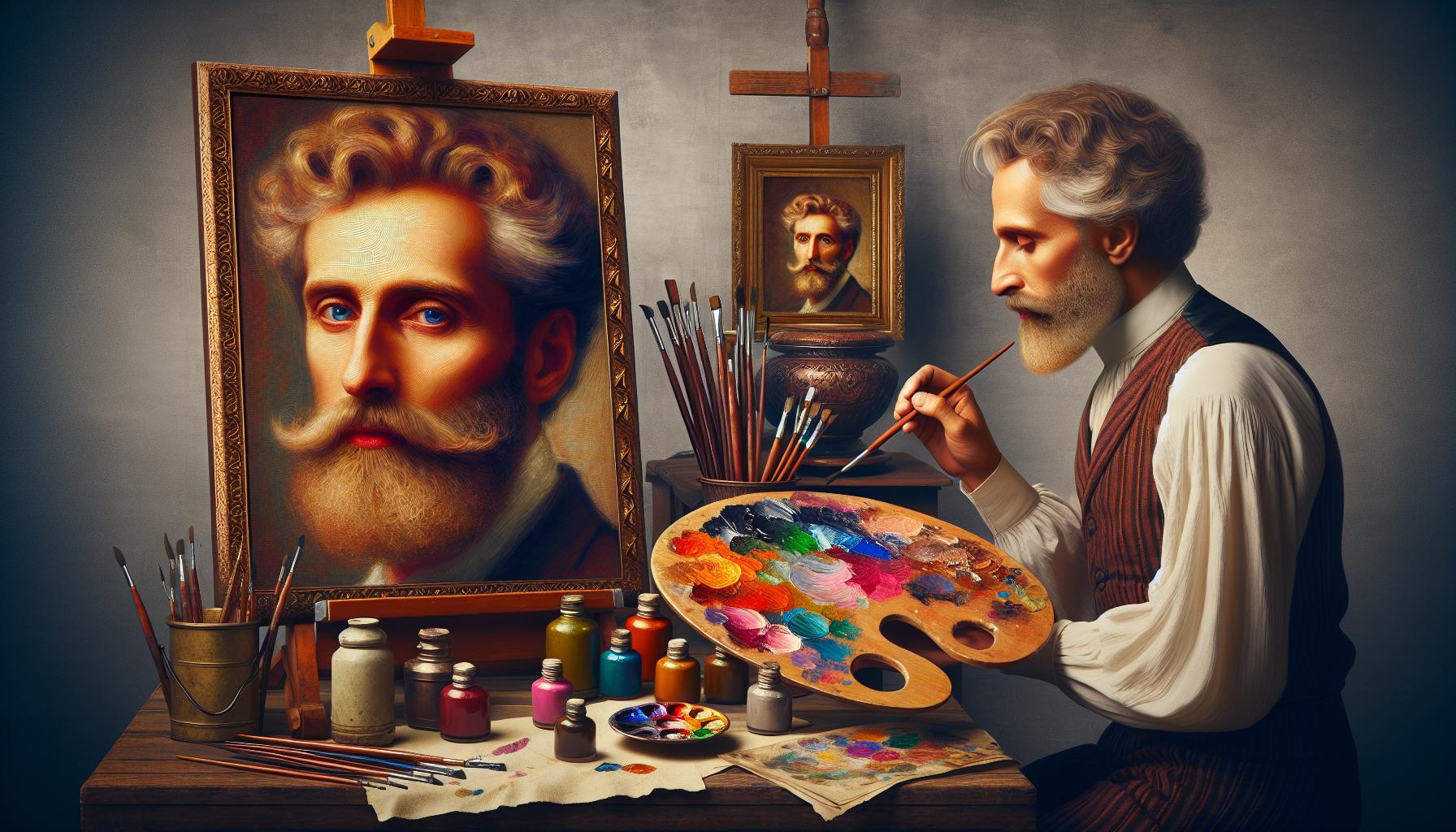Classical Portraiture: Techniques for Painting Lifelike Faces in Oil
Unlock the secrets of classical portrait painting with our guide to lifelike faces in oil. Learn timeless techniques from underpainting to glazing, and elevate your artistry to new heights. Dive in and transform your portraits into mesmerizing masterpieces!

Classical Portraiture: Techniques for Painting Lifelike Faces in Oil
Classical portrait painting, a revered form of art that dates back centuries, remains a mesmerizing niche for artists. The ability to produce lifelike faces in oil captures the viewer's attention and conveys an enigmatic beauty. In this post, we delve into Classical portrait painting techniques and explore the methods to create compelling, true-to-life oil portraits. Whether you're an aspiring artist or an experienced painter, mastering these techniques will elevate your work to new heights.
Classical portrait painting techniques encompass more than just applying paint to canvas. This practice requires meticulous observation, understanding the subject's anatomy, and a grasp of color and light. By focusing on these core principles, your portraits can exude realism and depth.
Central to Lifelike oil portrait methods is the mastery of layering and glazing. Renaissance masters like Leonardo da Vinci and Rembrandt are noted for their sublime handling of oils, creating portraits that seem to breathe life. But achieving this level of realism demands precision and patience, skills that we’ll cover in detail.
The Foundation: Underpainting
Before diving into the main composition, lay the groundwork with an underpainting. This preliminary layer, often executed in monochrome or limited palette, establishes the value structure of your portrait.
The most common method is the "grisaille" technique, which involves creating a monochromatic sketch using shades of grey. This not only provides a road map for values but also adds a sculptural aspect to the portrait. In some cases, artists use a "verdaccio" underpainting— a greenish base layer—effective for neutralizing skin tones.
The Importance of Proportions and Anatomy
Understanding human anatomy is vital to mastering portraiture in classical art. Studying bone structure, muscle formation, and facial landmarks enables you to render proportions accurately. Knowledge of anatomy ensures that your subjects don't appear distorted or unnatural.
To start, divide the face into thirds vertically—forehead, nose, and mouth/chin area. This simple division immediately helps in placing features correctly. Eyes typically fall halfway down the head. Use these guidelines judiciously as every face has unique traits.
Blocking in the Features
Once your underpainting and proportions are set, block in the main features. Use diluted oils or a wash to delineate the layout of the eyes, nose, mouth, and ears. Focus on placement and overall shapes, not details at this stage. Blocking in ensures that you maintain correct proportions and alignment as you proceed to finer work.
Capturing Light and Shadow
Light plays a pivotal role in realistic face painting tutorial. Using a single, consistent light source, map out the areas of light and shadow. This chiaroscuro technique creates a dynamic interplay, making your paintings pop with three-dimensionality.
Observe how light interacts with the contours of the face: which areas catch highlights, and which fall into shadow. This involves not just simple lightening and darkening but recognizing subtle halftones and reflected lights.

The Layering and Glazing Process
Once the foundational steps are completed, it’s time to engage in one of the most crucial lifelike oil portrait methods: layering and glazing. Classical portrait painting techniques utilize successive thin layers of oil paint, built up to create depth and luminosity.
- First Layer (Dead Color): Apply the first layer using muted, mid-tones. This "dead color" stage is akin to creating a color map and sets the groundwork for subsequent layers.
- Initial Glazes: Begin glazing—applying transparent layers of oil paint thinned with medium. This gradually builds up intensity and richness.
- Subsequent Layers: Each new layer becomes progressively more detailed, focusing on refining shadows, mid-tones, and highlights.
- Final Details: The last layers emphasize the minutiae—fine wrinkles, texture of the skin, eyelashes, and other minuscule attributes.
The glazing process allows for a captivating luminescence as light penetrates these layers, lending your painting a lifelike glow.
Mastering Facial Details
To master facial detail in oil painting, keen observation is indispensable. Pay attention to the subtleties: the delicacy of the eyelashes, the texture of skin, and minute color variations. Here are some focal points:
- Eyes: Known as the 'windows to the soul,' eyes can make or break a portrait. Capture the moist reflection in the cornea, the subtle variations in the iris, and the fullness of the waterline.
- Nose: The complex structure of the nose requires careful shading. The transitions between light and shadow should be smooth, giving it a realistic form.
- Mouth: Lips vary widely in color and shape. Fine tuning the gradation from the highlights on the top lip to the shadows in the creases enhances realism.
Balancing Warm and Cool Tones
In portraiture in classical art, achieving natural skin tones means balancing warm and cool colors. Typically, areas hit by light are warmer, while shadows appear cooler. Experiment with placing warm glazes in lit areas and cooler glazes in shadows. Mastering this interplay avoids a "flat" look and gives the skin a lifelike quality.
Finishing Touches and Varnishing
Once you are satisfied with the portrait, apply finishing touches—nuances that capture the subject’s personality. This could be an intricate hair strand or a slight variation in skin texture.
After the painting is thoroughly dry (which can take months), apply a varnish to protect it and unify the finish. Use a brush to apply varnish evenly, ensuring no bubbles or streaks form.
Conclusion
By internalizing these Classical portrait painting techniques, you’re well on your way to mastering the art of lifelike faces in oil. Remember, the journey to becoming proficient in lifelike oil portrait methods requires practice, patience, and keen observation.
Whether you're creating portraits steeped in tradition or pushing creative boundaries, these techniques offer a solid foundation. Stay dedicated, keep experimenting, and watch your work evolve into captivating, lifelike masterpieces.
Happy painting!
